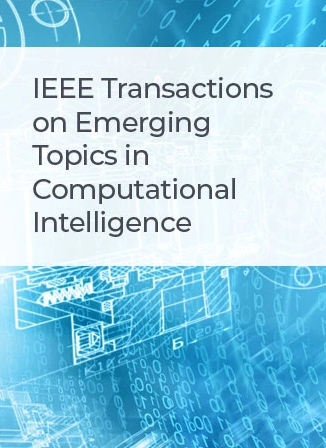Motion Expressions Guided Video Segmentation via Effective Motion Information Mining
IF 5.3
3区 计算机科学
Q1 COMPUTER SCIENCE, ARTIFICIAL INTELLIGENCE
IEEE Transactions on Emerging Topics in Computational Intelligence
Pub Date : 2025-02-13
DOI:10.1109/TETCI.2025.3537936
引用次数: 0
Abstract
Motion expressions guided video segmentation is aimed to segment objects in videos according to the given language descriptions about object motion. To accurately segment moving objects across frames, it is important to capture motion information of objects within the entire video. However, the existing method fails to encode object motion information accurately. In this paper, we propose an effective motion information mining framework to improve motion expressions guided video segmentation, named EMIM. It consists of two novel modules, including a hierarchical motion aggregation module and a box-level positional encoding module. Specifically, the hierarchical motion aggregation module is aimed to capture local and global temporal information of objects within a video. To achieve this goal, we introduce local-window self-attention and selective state space models for short-term and long-term feature aggregation. Inspired by that the spatial changes of objects can effectively reflect the object motion across frames, the box-level positional encoding module integrates object spatial information into object embeddings. With two proposed modules, our proposed method can capture object spatial changes with temporal evolution. We conduct the extensive experiments on motion expressions guided video segmentation dataset MeViS to reveal the advantages of our EMIM. Our proposed EMIM achieves a基于有效运动信息挖掘的运动表达式指导视频分割
运动表达式引导视频分割的目的是根据给定的物体运动语言描述对视频中的物体进行分割。为了准确地分割跨帧的运动物体,捕获整个视频中物体的运动信息是很重要的。然而,现有的方法不能准确地编码物体运动信息。在本文中,我们提出了一个有效的运动信息挖掘框架来改进运动表达式引导的视频分割,称为EMIM。它由两个新颖的模块组成,包括层次运动聚合模块和盒级位置编码模块。具体而言,分层运动聚合模块旨在捕获视频中对象的局部和全局时间信息。为了实现这一目标,我们引入了局部窗口自关注和选择状态空间模型,用于短期和长期特征聚合。受物体空间变化能有效反映物体跨帧运动的启发,盒级位置编码模块将物体空间信息整合到物体嵌入中。该方法采用两个模块,可以捕捉到随时间变化的物体空间变化。我们在运动表达式引导的视频分割数据集mei上进行了大量的实验,以揭示我们的EMIM的优势。我们提出的EMIM实现了42.2%的$ \mathcal {J \& F}$得分,比之前的方法LMPM高出5.0%。
本文章由计算机程序翻译,如有差异,请以英文原文为准。
求助全文
约1分钟内获得全文
求助全文
来源期刊

IEEE Transactions on Emerging Topics in Computational Intelligence
Mathematics-Control and Optimization
CiteScore
10.30
自引率
7.50%
发文量
147
期刊介绍:
The IEEE Transactions on Emerging Topics in Computational Intelligence (TETCI) publishes original articles on emerging aspects of computational intelligence, including theory, applications, and surveys.
TETCI is an electronics only publication. TETCI publishes six issues per year.
Authors are encouraged to submit manuscripts in any emerging topic in computational intelligence, especially nature-inspired computing topics not covered by other IEEE Computational Intelligence Society journals. A few such illustrative examples are glial cell networks, computational neuroscience, Brain Computer Interface, ambient intelligence, non-fuzzy computing with words, artificial life, cultural learning, artificial endocrine networks, social reasoning, artificial hormone networks, computational intelligence for the IoT and Smart-X technologies.
 求助内容:
求助内容: 应助结果提醒方式:
应助结果提醒方式:


